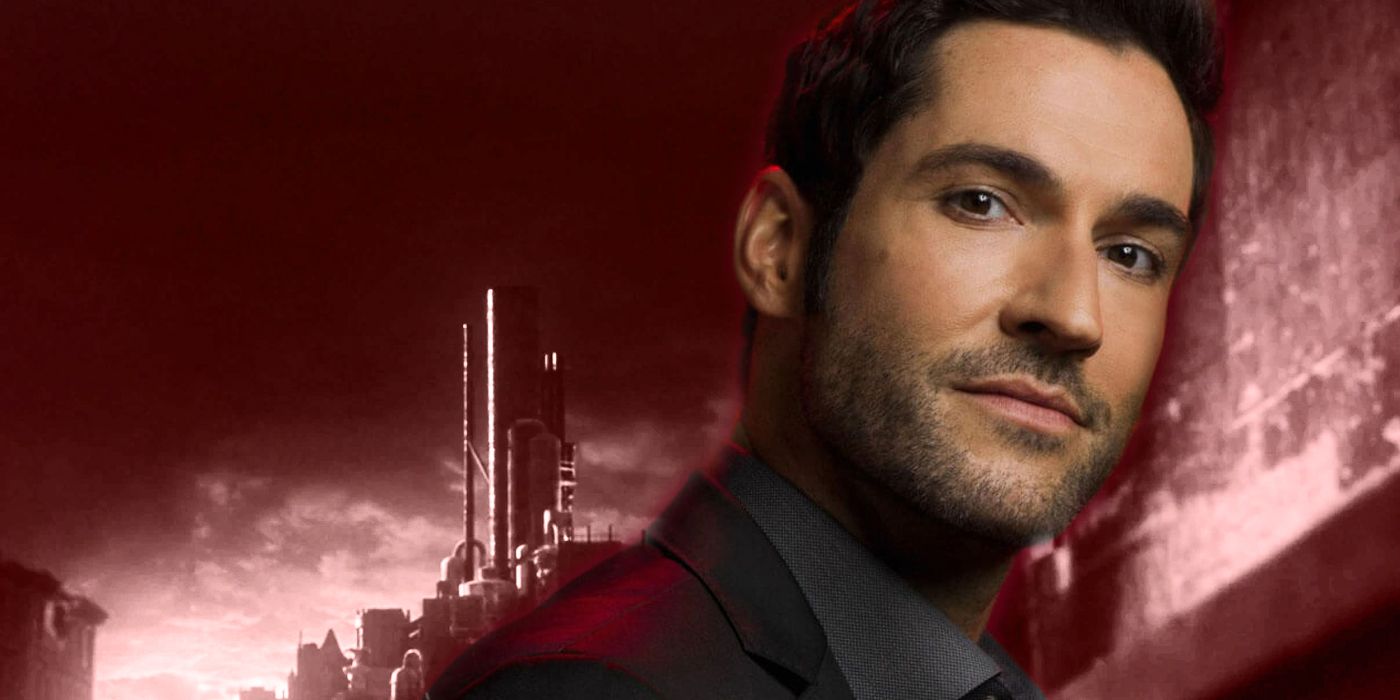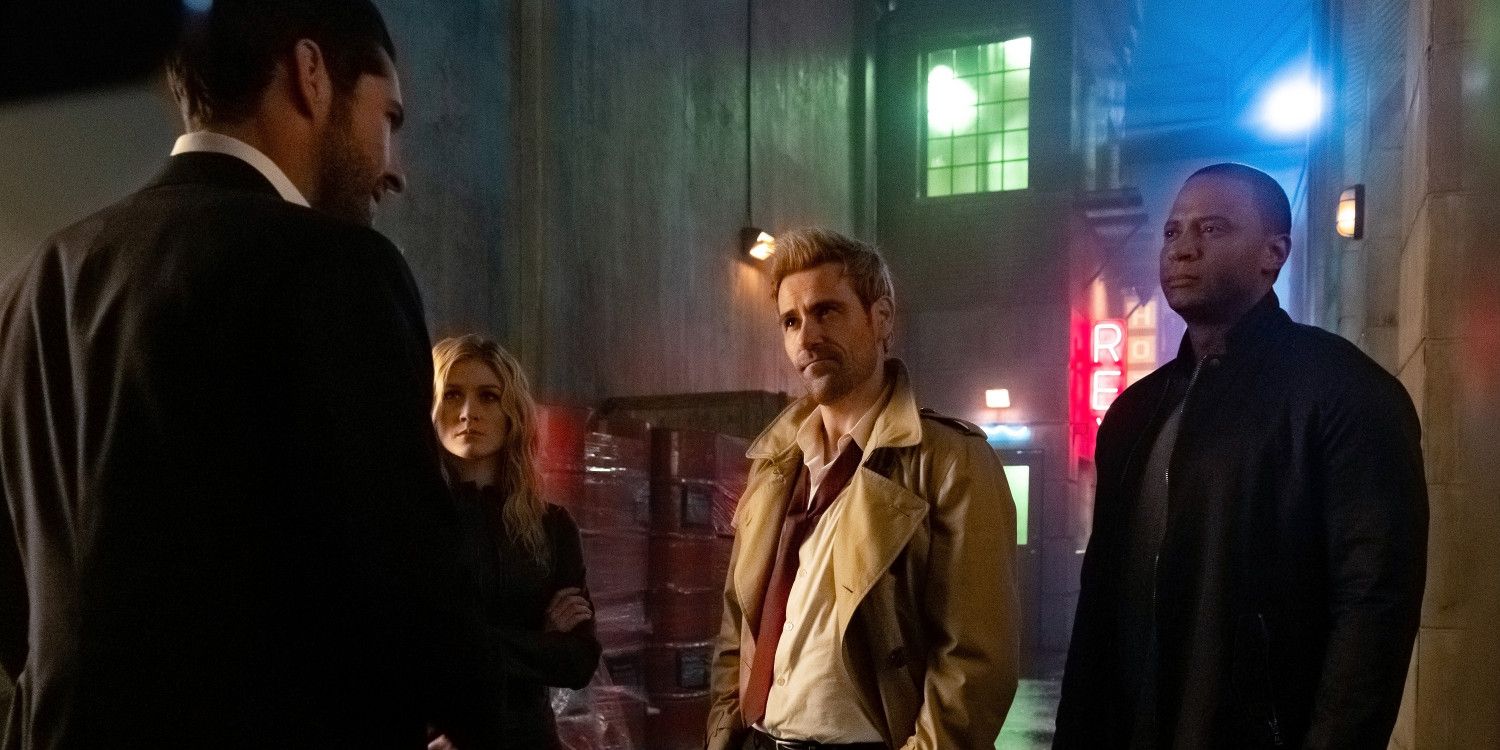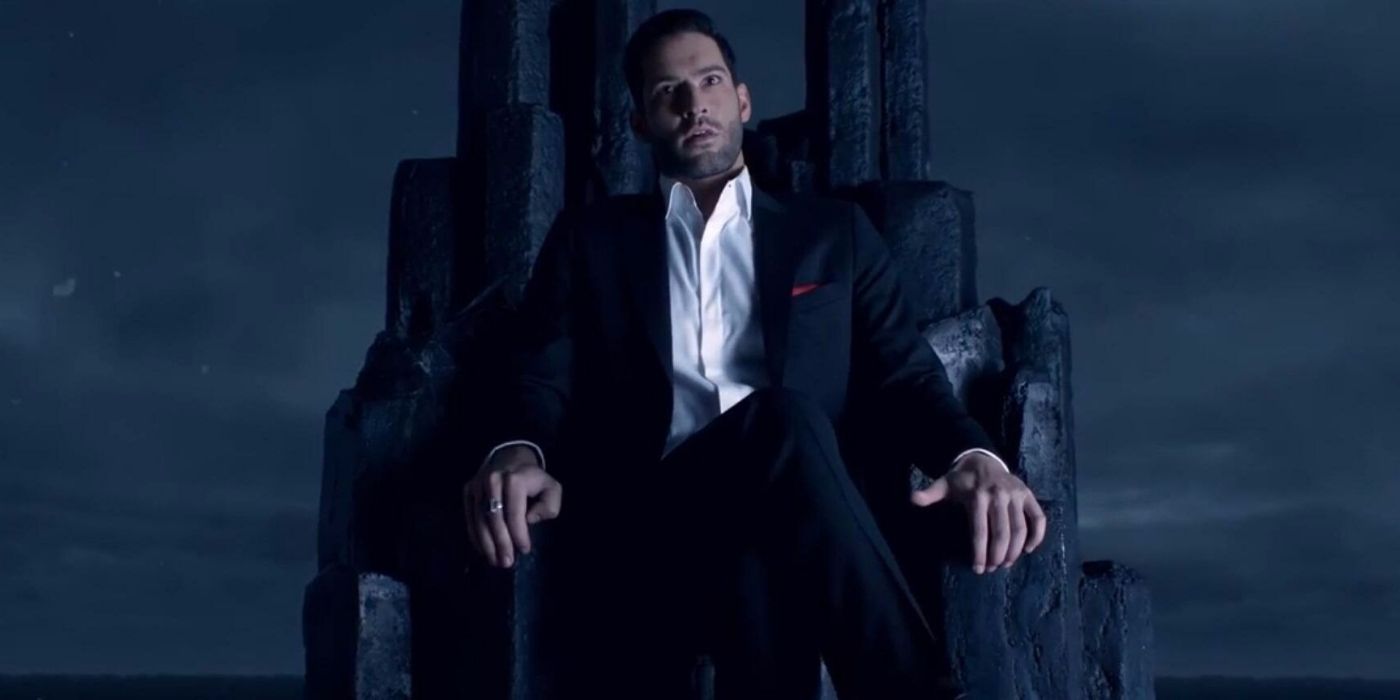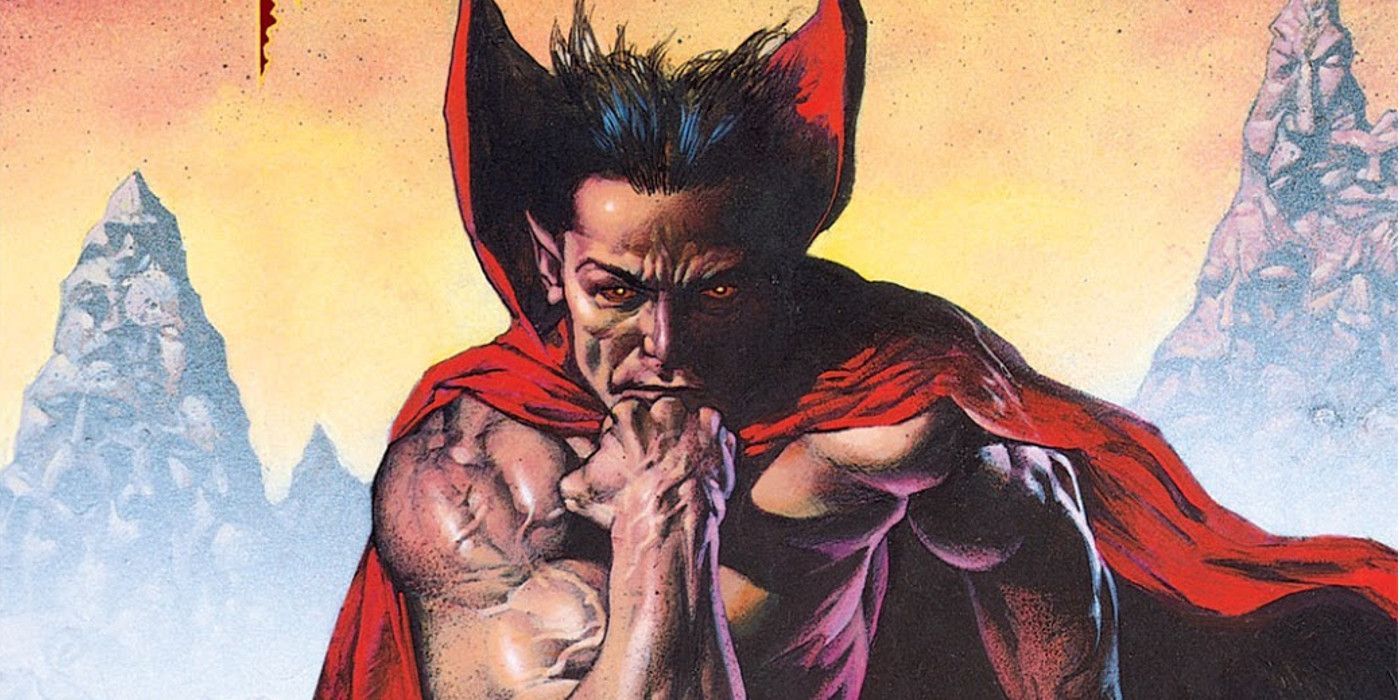When Tom Ellis' Lucifer Morningstar made a brief appearance in Crisis on Infinite Earths alongside John Constantine, fans were thrilled to learn that Lucifer was officially part of the Arrowverse. Yet, as amusing as the brief scene was, it opened up a whole host of continuity problems regarding the conflicting versions of Hell depicted in Legends of Tomorrow and Lucifer.
Crisis on Infinite Earths was a revolutionary piece of television, breaking boundaries to expand the already sizable shared multiverse of superhero shows collectively known as the Arrowverse. The crossover event established that every single television series and movie based on a DC Comics' property existed as its own reality within the larger Arrowverse. Two tie-in comic book specials expanded this further into comics and animation, with the world of Max Fleischer's Superman cartoons and the New 52 universe also falling victim to the Anti-Monitor's efforts to unmake all reality. In the middle of all of this chaos, Lucifer (which was based on the character of Lucifer Morningstar as depicted in the classic graphic novel series The Sandman) was established as being set on a world designated Earth-666.
The Crisis gave way to a new Arrowverse, with a new collection of alternate realities and new physical laws that made traveling between universes impossible, at least through the science and magic available on the newly formed Earth-Prime, which was made up of all the realities of the superhero shows on The CW. All of the other DC Comics inspired series currently in production were designated as their own individual Earths, such as the world of DC Universe's Stargirl being set on the new Earth-2. Curiously, the fate of Lucifer Morningstar and Earth-666 was not detailed in the aftermath of Crisis on Infinite Earths, giving rise to a number of questions regarding the afterlife in the Arrowverse. Further questions were raised by Legends of Tomorrow season 5, which presented a storyline based around the inner workings of Hell.
How Lucifer's Crisis On Infinite Earths Cameo Created An Arrowverse Plot Hole
Lucifer Morningstar's appearance in "Crisis on Infinite Earths - Part 3" was meant to be a secret, but was spoiled by paparazzi who spotted Tom Ellis in Vancouver while the crossover was being filmed. (Ellis denied his involvement in Crisis until the very end and then apologized once the episode aired.) The brief scene centered around warlock John Constantine traveling to Earth-666 to call in a favor that Lucifer owed him, with John "Spartan" Diggle and Mia Smoak from Arrow accompanying him.
Constantine had been called upon by Diggle and Smoak to reunite the body and soul of Oliver Queen. Unfortunately, the destruction of multiple universes caused by the Crisis generated a massive amount of magical turbulence, leaving Constantine unable to open a portal to Purgatory as part of the resurrection ritual. This led Constantine to approach Lucifer for help. The fallen angel was not pleased to see Constantine, but ultimately relented, admitting that he did owe Constantine for an undefined favor to Lucifer's ally Mazikeen. Lucifer provided Constantine with a Devil tarot card that acted as a gateway into Purgatory and sent the heroes on their way, dismissing their concerns about all of reality coming to an end.
The brief scene was regarded as one of the best bits of the Crisis event and left fans of both Lucifer and Legends of Tomorrow discussing the possibility of a crossover or, at the very least, Matt Ryan's John Constantine showing up in an episode of Lucifer season 5. The showrunners of Lucifer were quick to reply to the fans' positive response and explained away the seeming conflict between the storylines of Crisis on Infinite Earths and Lucifer by establishing that the scene with Constantine occurred before the start of the Lucifer series, when Lucifer was still living on Earth but not engaged in proactive heroism as a consultant for the LAPD. Unfortunately, they did nothing to address the larger problem raised by the crossover; Lucifer and Legends of Tomorrow offer drastically different visions of Hell.
The Hell of Lucifer was an icy prison, where damned souls were confined to individual rooms, continually reliving their greatest sins — when they weren't being tortured by demons. Lucifer made numerous jokes about what methods this torture entailed (such as using wigs to torment sinners with a fear of hair or playing Justin Beiber music) but Mazikeen confirmed that they used a person's sins to determine the means of punishment. Lucifer also stated that there are special places in Hell reserved for specific breeds of sinner, like schoolyard bullies. However, the most fascinating aspect of Lucifer's Hell was that mortals only went there if they were convinced, deep down, that they truly deserved to be there. It had also been specifically stated that only an angel can rule over Hell, which prompted Lucifer to reclaim his throne in Lucifer's season 4 finale.
By contrast, the Hell depicted in seasons 4 and 5 of Legends of Tomorrow was a fiery urban wasteland. While demons were employed in torturing sinners, it appeared that most were free to wander Hell's streets until called upon by whatever demon had a claim on their soul. This Hell held the guilty and innocent alike, with John Constantine's greatest failure involving his losing a young girl named Astra Logue to Hell during a botched ritual. According to the demon Fucifer, it was possible for damned mortals to acquire power in Hell's hierarchy and eventually become demons; a process which a grown-up Astra Logue began in Legends of Tomorrow's season 4 finale after she acquired ownership of some of history's worst souls. Rather than Lucifer, this Hell was ruled over by a Triumvirate made up of three demons: Satan, Beelzebub and Belial.
It should also be noted that both series had drastically different rules regarding how difficult it was to get in and out of Hell. In Lucifer, only angels had the power to travel between the material world and the afterlife, with demons only being able to manifest on Earth by taking possession of a recently deceased human body. In Legends of Tomorrow, John Constantine (and later, his apprentice Gary Green) were able to work a ritual that allowed them to enter and exit Hell whenever they wished, and Astra Logue had no trouble sending her army of damned souls (which the Legends dubbed Encores) back to Earth to cause trouble.
Lucifer's Hell Already Doesn't Make Sense
The Hell of Lucifer has another conflict unique unto itself: it has no apparent need for the demons that populate it. The rooms of Hell that cause a person to repeatedly relieve the worst moments of their life are powerful enough to hold Lucifer himself, who briefly became trapped in the memory of murdering his brother Uriel in the season 2 episode "A Good Day To Die." Given that, there is no apparent reason for why Hell should need to employ demons as torturers, other than it gives the demons something to do besides cause mischief on Earth. Another possibility is that the demons are required to act as wardens for those few beings (such as Lucifer's mother, The Goddess of All Creation) who were sent to Hell against their will.
DC Comics Shows How The Arrowverse & Lucifier's Hell Plot Holes Can Be Fixed
Nearly three decades ago, a similar conflict to the one between Lucifer and Legends of Tomorrow arose in the very same comic books which inspired both shows: The Sandman and Hellblazer. Writer Garth Ennis proposed a fix which ultimately addressed the problem and established a new hierarchy for DC Comics' Hell. Ironically, the fix ultimately prove unnecessary as The Sandman and Hellblazer broke off from the mainstream DC Comics universe to become part of a new shared universe of comics published under the Vertigo Comics imprint. Still, Ennis's fix could be applied to the Post-Crisis Arrowverse.
It was Neil Gaiman who laid out the basic outline for Hell's Post-Crisis hierarchy in The Sandman #4 (April 1989), building off of the framework Alan Moore had established during his Pre-Crisis Swamp Thing series. With Hell reeling following a civil war that saw its forces split between those who joined with a destructive force called the Rising Darkness and those who joined with Heaven to defend reality, Lucifer Morningstar, the first angel to fall from Heaven, agreed to share the duties of ruling Hell with the demon lords Beelzebub and Azazel. Dubbed the Satanic Triumvirate, the trio would rule over Hell together until The Sandman #23 (February 1991), when Lucifer elected to quit his job, kicked all the demons and damned souls out of Hell, and set about wandering the world before ultimately coming to settle in Los Angeles, where he opened a nightclub called Lux.
Shortly thereafter, John Constantine would have an encounter with a demonic being who was meant to be Satan in Hellblazer #42 (June 1991), tricking the Devil into drinking holy water that had been turned into stout ale. Constantine would top this stunt two issues later, by forcing the three demons who ruled Hell into a bidding war that left them having to heal his lung cancer, lest they be forced to go to war with each other over the ownership of his soul after he died. Despite the storyline referring to a triumvirate who ruled Hell, Satan did not resemble the Lucifer seen in The Sandman, nor did the other two demons resemble Beelzebub and Azazel.
To further complicate matters, another version of the Satanic Triumvirate (Lucifer, Azazel and Belial) was depicted in Secret Origins #48 (April 1990). Later that year, Etrigan the Demon attempted a coup of Hell's hierarchy in his solo series, joining forces with the demons Ran Va Daath and Abaddon to overthrow the Satanic Triumvirate; here identified as Lucifer, Beelzebub and Belial. Etrigan's reign as a Prince of Hell was short, however, and the new Satanic Triumvirate fell apart after Etrigan was once again bound to the sorcerer Jason Blood in The Demon #7 (January 1991).
Hellblazer writer Garth Ennis attempted to clarify all of this in Hellblazer #59 (November 1992), which established that the "Satan" that John had bested was a being known as the First of the Fallen. The comic saw The First of the Fallen recalling the recent history of Hell, including the war on the Rising Darkness, Etirgan's coup and Lucifer abandoning his throne. The comic also established the First, Second and Third of the Fallen as beings separate from the demons Beelzebub, Azazel and Belial, and that they had been in Hell when Lucifer Morningstar became the first archangel to be banished from Heaven. Ultimately, Ennis' conceit was that Hell was big enough to allow for several rulers and that the First Three were content to allow Lucifer and the demons to play their games of power, so long as their own schemes were not hindered.
This same idea could be applied to the new Arrowverse, with the Triumvirate of Satan, Beelzebub and Belial ruling over the demons in one section of Hell, while Lucifer and the First of the Fallen (who was part of the short-lived Constantine series) tend to their own business in other parts of the same dark plane. Another possible answer, perhaps the simplest one, is that Lucifer's Hell is the Hell of Earth-666 and a different place entirely than the Hell of Earth-Prime. The only problem with this idea, however, is that traditionally there is only one Heaven and one Hell for the whole of the multiverse in the classic DC Comics cosmology. Another possibility is that Earth-666 didn't make it into the Post-Crisis Arrowverse at all and the action of Lucifer all takes place in the Pre-Crisis Arrowverse. Whatever the answer, it is to be hoped that some clarification will come in season 5 of Lucifer.




